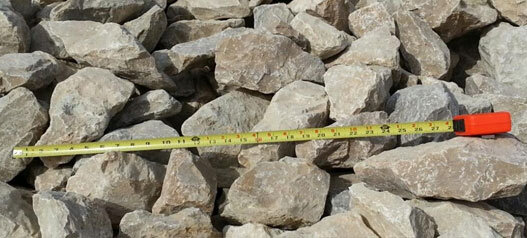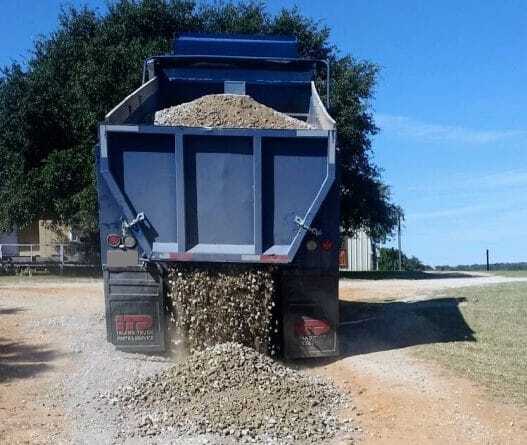Articles
Your Complete Topsoil Buying Guide in Texas
When you want to add one or more layers of topsoil, the type you’ll use will depend on your project. To find the ideal topsoil, take a deeper look at your options in the guide below. An Overview of the Best Types of Topsoil for Texas Properties Before getting into a detailed topsoil buying guide…
Read MoreComprehensive Gravel Size Chart for Every Application
Gravel is useful for all kinds of projects, from serving as a functional base material for construction projects to providing a clean look in landscaping projects. However, choosing the right size for your project is critical to get lasting results. Our gravel size chart will help you understand how to select the appropriate material for…
Read MoreBest Sand for Construction – Insights & Things to Look For
Best Sand for Construction: Top Types & Their Uses Choosing the best sand for construction projects isn’t just about getting what’s readily available. You must understand how the right material contributes to the structure’s strength, stability, and longevity. Sand is one of the most commonly used construction materials, but not all sand is the same.…
Read MoreCrushed Limestone vs Crushed Concrete: Which One is Right for You?
As a result of the number of questions that we at Select Sand & Gravel receive regarding the usage of Crushed Limestone Rock versus Crushed Concrete Rock, we felt it was important to state the differences in these types of Rock. There is an abundance of both materials in Dallas, Fort Worth, Austin, San Antonio, and Houston Texas markets that our company serves. We thought it would be useful to write an article to provide an overview as to the pros and cons of each type: Crushed Limestone Rock and Crushed Concrete Rock. Both of these Aggregate Rock materials are used in the formulation of concrete as well as other applications. As such, a quick explanation of concrete would also be of assistance.
Concrete was originally formulated by the ancient Romans. Generally speaking, it is poured into a mold when in the liquid form. Over the course of time it hardens into a formidable surface. Concrete is a mixture of cement, sand, and crushed rock or stone of different varieties. In the Texas area most of the crushed rock that is utilized is crushed limestone, crushed concrete, or a smooth river rock. The hardness of the stone is very important as there is a correlation between stone hardness and strength of the finished concrete.
There are other uses for Crushed Limestone. Specifically, this type of rock can be used as:
Road Base
Construction Entrance Rock
Pipe Embedment (Pipe Bedding)
Rip Rap (Erosion Control)
Under a construction slab
Driveway Gravel
Roofing Gravel surface
Differences Dirt, Topsoil, Sandy Loam
Differences Dirt, Topsoil, Sandy Loam – What’s so different about Dirt?
(Topsoil – Soil / Dirt Overview)
Every day at Select Sand and Gravel we provide different types of soil (Topsoil, Sandy Loam, Fill Dirt) to customers for different applications. We strive to provide the correct Dirt or Soil material to the homeowner or professional contractor so that the delivered material makes the residential project or commercial jobsite work as easy as possible. Without the proper information, it can be difficult to get the desired result. In striving to assist our customers with product selection this article is written to provide the average homeowner or contractor with a better understanding of the differences between Dirt, Topsoil, and Sandy Loam.
All soil is composed of Sand, Silt and Clay. These designations are simply an expression of the size of the soil particles of which they are comprised. Sand is the largest soil particle which is typically composed of silca and quartz. The next size soil particle is silt and the smallest size is clay. All of the soil that we deliver from Select Sand and Gravel to our customers are some combination of sand, silt and clay.
Read MoreGravel Roadbase Driveway
We at Select Sand & Gravel strive to assist customers with Sand, Gravel, Rock, and Dirt projects. Examples of the projects include: Gravel Driveways, Roadbase Driveways, as well as, other uses for Topsoil, Dirt, Crushed Rock and Crushed Limestone. Our customers include the Commercial Contractor or Residential Customer who need Sand, Gravel, Rock, Dirt material to successfully complete the task at hand. Specifically, this article is to help inform our current and potential customers as it relates to the construction of a road base driveway or parking lot.
In Texas, there are a number of materials that are readily available and can be successfully used to create a stable, drive-able surface. The main materials that are used in this region are crushed limestone, recycled crushed concrete, crushed river rock, caliche, recycled asphalt, and decomposed granite. This is by no means an exhaustive list but it would comprise the primary list of materials used in this region of Texas.
Read More


